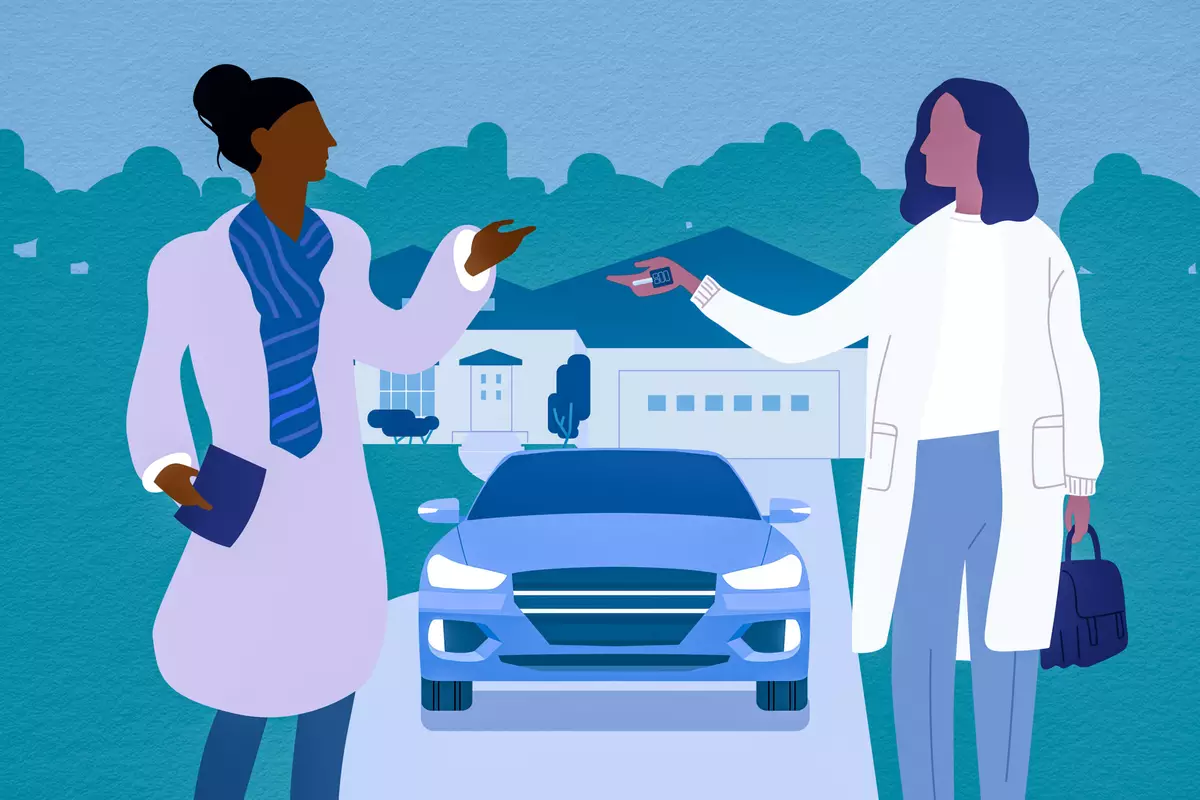Whether you’re looking to replace your car or dump an extra one to take advantage of high used car values, selling a vehicle privately can earn you more money than trading it in with a dealership. With the financial gain, however, comes some trade-offs. You’ll need to put more time and effort into the sales process, and there’s more risk involved with screening potential buyers, test drives, and payment. Learn how to navigate each step of the process to ensure the extra effort pays off.
Related: Should you trade in your car or sell it privately?
1. Determine the value of your car
Many factors influence the value of a car. The age, mileage and condition of the vehicle are important, but external variables such as market conditions, fuel prices and brand appeal also play a role. For example, the shortage of inventory has caused a spike in the value of used cars, especially for older vehicles: among Cars.com dealers, the median price of a 10-year-old used car (year 2012 model) was $16,331 in July. 2022. In comparison, the median price of a 10-year-old vehicle (2010 model year) was only $8,995 in July 2020. To determine the vehicle’s value, look at comparable used car listings or do estimate the vehicle by a dealer. or a chain of used cars like CarMax.
2. Create an ad to connect with buyers
Next, you will need to advertise your vehicle to potential buyers. First, photograph the car and create an ad using online tools such as Cars.com’s sell it yourself option. Once you’ve highlighted your car’s strengths in the ad, you’ll need to communicate with potential buyers via email and phone. Use this opportunity to screen buyers and beware of red flags like a buyer who only wants to communicate via email or text and refuses to talk over the phone. You’ll want to showcase your vehicle’s best attributes while being honest about its condition – buyers don’t expect a used car to be in pristine condition, but they do expect its condition to match. to description.
3. Prepare the paperwork
Selling privately requires more forethought in terms of paperwork than dealing with a dealer who will typically take care of this step. You will need all key documents, including the vehicle’s title deed and bill of sale, which serves as your receipt for the transaction; the bill of sale is recommended for a private car sale and may be required in some states. If you still owe money on the vehicle and the title is in the lien holder’s possession, you will need to contact your lender for the repayment amount and instructions for completing the transaction.
Although not mandatory, collecting additional documentation like a vehicle history report, maintenance records, and extended warranty details can make the vehicle more desirable, helping you get more out of it or sell it more. rapidly.
4. Sell it safely: test drive and payment
Selling a car privately also involves more uncertainty than trading in or selling to a dealership. Whether it’s meeting strangers for test drives, transferring ownership, or accepting payment for the vehicle, you’ll want to prioritize your own safety as well as that of the vehicle.
When setting up a test drive, speak with the potential buyer over the phone, arrange a meeting place in a public place, and bring a friend, if possible. If the buyer insists on taking the test drive alone, be sure to get a photo of their driver’s license information before handing over the keys.
Once you have an acceptable offer on the table, you will need to transfer ownership and securely accept payment. Communicate your preferred method of payment to the buyer – a cashier’s check or cash is preferred, as personal checks carry more risk. Never accept a check for more than the asking price for the vehicle. A common scam involves the buyer sending a check for more than the purchase price and asking the seller to return the difference (these checks are usually counterfeit). Do not transfer title to the vehicle until you have received full cash payment or the buyer’s check has cleared.
5. Tie loose ends
Some private sale scenarios require a few extra steps to complete the transaction. In the case of an out-of-town buyer, you will need to arrange vehicle pickup or consider using a vehicle delivery service to transport it. Prices vary depending on transport time and vehicle weight, but you can expect it to cost an average of $1,000 to $2,000.
In most states, vehicle license plates must remain with the seller, so you will want to remove them before handing the vehicle over to its new owner. California is an exceptionrequiring license plates to remain with the vehicle.
Some states also require the seller to notify the Department of Motor Vehicles within a certain number of days after the vehicle is sold to an individual. For example, California gives sellers five days to complete a Notice of Transfer and Release of Liability form, while Illinois requires sellers to complete a Notice of Sale form as soon as the sale of the vehicle is final. Check with your state’s DMV for any paperwork requirements for a private vehicle sale. Finally, notify your insurance company and request that the vehicle being sold be removed from your policy.
More on Cars.com:
Related video:
The Cars.com Editorial Department is your source for automotive news and reviews. In accordance with Cars.com’s long-standing ethics policy, editors and reviewers do not accept gifts or free travel from car manufacturers. The editorial department is independent of Cars.com’s advertising, sales and sponsored content departments.

